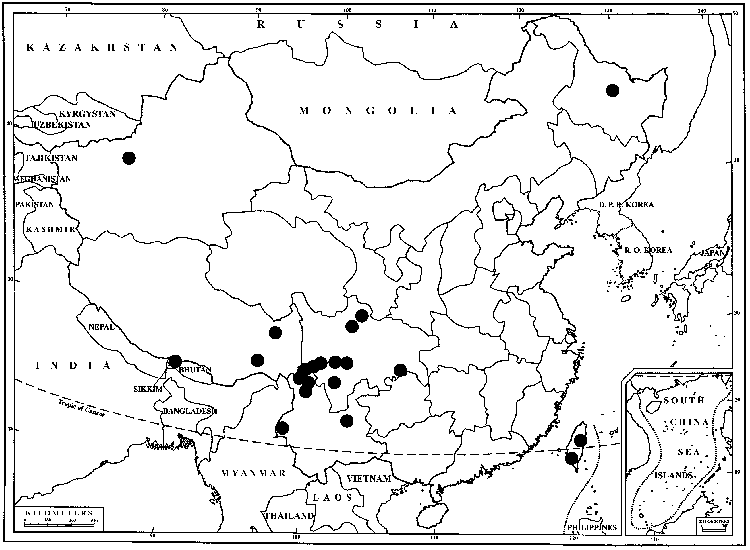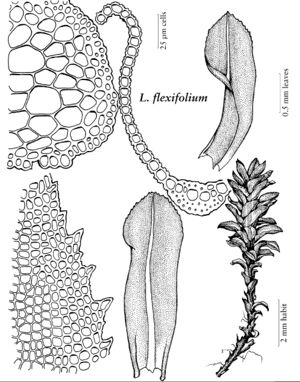Leptodontium flexifolium
Öfvers. Kongl. Vetensk.-Akad. Förh. 21: 227. 1864,.
Stems to 1 cm. Leaves 0.7–0.9 mm, ligulate to short-lanceolate, bordered distally by 1–5 rows of less papillose, thick-walled cells; apex broadly acute; costa ending 2–4 cells before the apex, abaxially papillose; distal laminal cells 10–12 µm wide, 1: 1, walls thin in medial portion of leaf, lumens quadrate, proximal cells thin-walled throughout.
Habitat: Soil, rarely on decorticating bark, rocks
Elevation: moderate to high elevations (1400-2200 m)
Distribution

Ariz., N.Mex., N.C., Tex., Mexico, Central America, South America, Europe, Asia, Africa, Pacific Islands (Hawaii)
Discussion
Leptodontium flexifolium is a rare species found in rocky places at higher elevations in the southern Appalachians and in the southwestern states. The gemmae that are commonly found on stalks in leaf axils elsewhere were not seen in the flora area. The dentate, bordered leaves are immediately diagnostic of this species, while the anatomical characters of the genus will confirm the identification. Subfossils 40,000 years old have been found (J. A. Janssens and R. H. Zander 1980) at a site in the Yukon. Dichodontium pellucidum is commonly mistaken for this species, but is easily distinguished by the dentate distal abaxial surface of the costa. Barbula convoluta is also similar but has quadrate adaxial costal cells and a distinct stem central strand.
Selected References
None.
